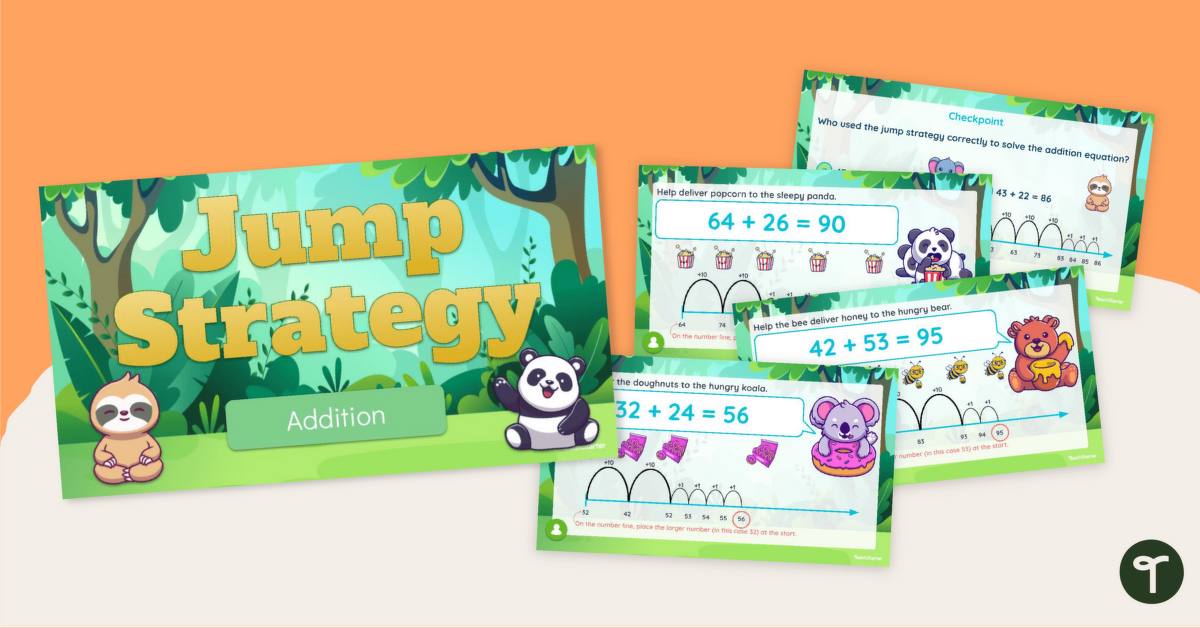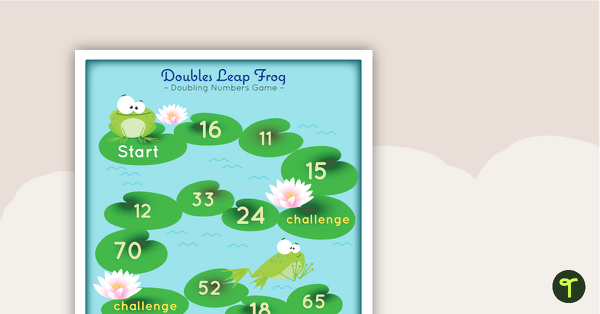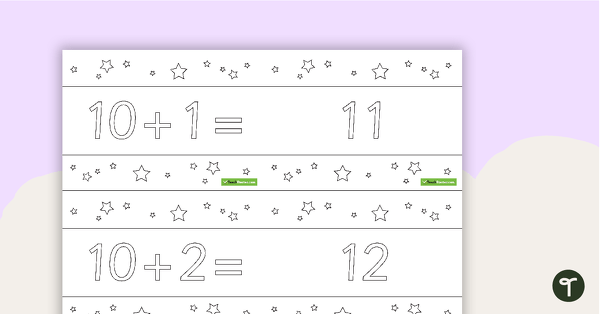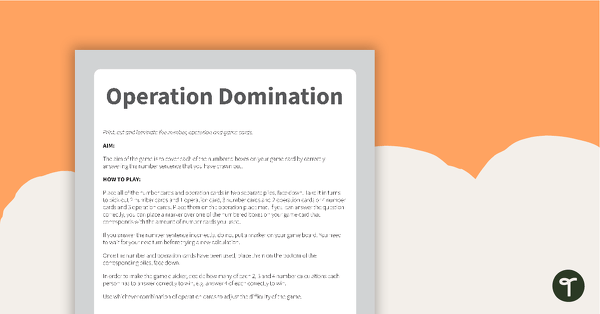Model adding two-digit numbers with regrouping using a number line and the jump strategy with a handy instructional slide deck.
Make Addition on a Number Line Easy with the Jump Strategy
Suppose you’re working on addition with regrouping, and your students are struggling. In that case, we can help you teach them the “Jump” strategy with a handy instructional slide deck to take your students step by step through the process of adding two-digit numbers with the jump strategy… To get started, here’s some information on the jump strategy for addition.
Model and Teach Number Line Addition With Ease!
The jump strategy can help students add two-digit numbers on a number line because it helps students break down the problem into smaller, more manageable steps.
This interactive teaching slide deck encourages students to break the addition process into smaller pieces through the gradual release method. The slide deck begins with modelled “We Do” problems that explicitly model the individual jumps of tens and ones to add.
Further on, students will remain engaged through guided practise and independent practise activities in which they have fun learning while feeding tasty treats to some cuddly creatures. At the end of the slide deck, students are also provided with independent knowledge checks to determine if they have acquired the skills needed to be successful with addition on a number line.
Download and Print Your Addition Lesson Plans!
You’re just a click away from getting your new resources! Use the dropdown arrow on the Download button to download the Google Slides or PowerPoint resource file.
Lisamarie Del Valle, a teacher in Florida and Teach Starter collaborator, contributed to this resource.








0 Comments
Write a review to help other teachers and parents like yourself. If you'd like to request a change to this resource, or report an error, select the corresponding tab above.